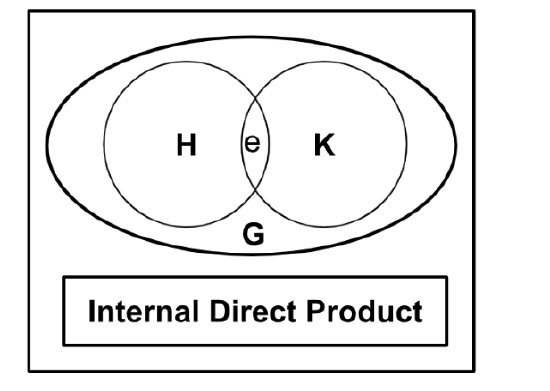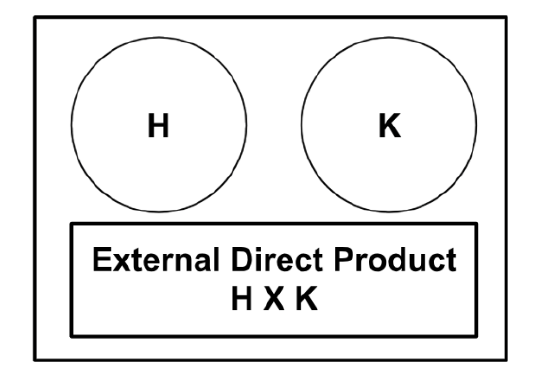4.4: On Special Groups
- Page ID
- 132499
\( \newcommand{\vecs}[1]{\overset { \scriptstyle \rightharpoonup} {\mathbf{#1}} } \)
\( \newcommand{\vecd}[1]{\overset{-\!-\!\rightharpoonup}{\vphantom{a}\smash {#1}}} \)
\( \newcommand{\id}{\mathrm{id}}\) \( \newcommand{\Span}{\mathrm{span}}\)
( \newcommand{\kernel}{\mathrm{null}\,}\) \( \newcommand{\range}{\mathrm{range}\,}\)
\( \newcommand{\RealPart}{\mathrm{Re}}\) \( \newcommand{\ImaginaryPart}{\mathrm{Im}}\)
\( \newcommand{\Argument}{\mathrm{Arg}}\) \( \newcommand{\norm}[1]{\| #1 \|}\)
\( \newcommand{\inner}[2]{\langle #1, #2 \rangle}\)
\( \newcommand{\Span}{\mathrm{span}}\)
\( \newcommand{\id}{\mathrm{id}}\)
\( \newcommand{\Span}{\mathrm{span}}\)
\( \newcommand{\kernel}{\mathrm{null}\,}\)
\( \newcommand{\range}{\mathrm{range}\,}\)
\( \newcommand{\RealPart}{\mathrm{Re}}\)
\( \newcommand{\ImaginaryPart}{\mathrm{Im}}\)
\( \newcommand{\Argument}{\mathrm{Arg}}\)
\( \newcommand{\norm}[1]{\| #1 \|}\)
\( \newcommand{\inner}[2]{\langle #1, #2 \rangle}\)
\( \newcommand{\Span}{\mathrm{span}}\) \( \newcommand{\AA}{\unicode[.8,0]{x212B}}\)
\( \newcommand{\vectorA}[1]{\vec{#1}} % arrow\)
\( \newcommand{\vectorAt}[1]{\vec{\text{#1}}} % arrow\)
\( \newcommand{\vectorB}[1]{\overset { \scriptstyle \rightharpoonup} {\mathbf{#1}} } \)
\( \newcommand{\vectorC}[1]{\textbf{#1}} \)
\( \newcommand{\vectorD}[1]{\overrightarrow{#1}} \)
\( \newcommand{\vectorDt}[1]{\overrightarrow{\text{#1}}} \)
\( \newcommand{\vectE}[1]{\overset{-\!-\!\rightharpoonup}{\vphantom{a}\smash{\mathbf {#1}}}} \)
\( \newcommand{\vecs}[1]{\overset { \scriptstyle \rightharpoonup} {\mathbf{#1}} } \)
\( \newcommand{\vecd}[1]{\overset{-\!-\!\rightharpoonup}{\vphantom{a}\smash {#1}}} \)
\(\newcommand{\avec}{\mathbf a}\) \(\newcommand{\bvec}{\mathbf b}\) \(\newcommand{\cvec}{\mathbf c}\) \(\newcommand{\dvec}{\mathbf d}\) \(\newcommand{\dtil}{\widetilde{\mathbf d}}\) \(\newcommand{\evec}{\mathbf e}\) \(\newcommand{\fvec}{\mathbf f}\) \(\newcommand{\nvec}{\mathbf n}\) \(\newcommand{\pvec}{\mathbf p}\) \(\newcommand{\qvec}{\mathbf q}\) \(\newcommand{\svec}{\mathbf s}\) \(\newcommand{\tvec}{\mathbf t}\) \(\newcommand{\uvec}{\mathbf u}\) \(\newcommand{\vvec}{\mathbf v}\) \(\newcommand{\wvec}{\mathbf w}\) \(\newcommand{\xvec}{\mathbf x}\) \(\newcommand{\yvec}{\mathbf y}\) \(\newcommand{\zvec}{\mathbf z}\) \(\newcommand{\rvec}{\mathbf r}\) \(\newcommand{\mvec}{\mathbf m}\) \(\newcommand{\zerovec}{\mathbf 0}\) \(\newcommand{\onevec}{\mathbf 1}\) \(\newcommand{\real}{\mathbb R}\) \(\newcommand{\twovec}[2]{\left[\begin{array}{r}#1 \\ #2 \end{array}\right]}\) \(\newcommand{\ctwovec}[2]{\left[\begin{array}{c}#1 \\ #2 \end{array}\right]}\) \(\newcommand{\threevec}[3]{\left[\begin{array}{r}#1 \\ #2 \\ #3 \end{array}\right]}\) \(\newcommand{\cthreevec}[3]{\left[\begin{array}{c}#1 \\ #2 \\ #3 \end{array}\right]}\) \(\newcommand{\fourvec}[4]{\left[\begin{array}{r}#1 \\ #2 \\ #3 \\ #4 \end{array}\right]}\) \(\newcommand{\cfourvec}[4]{\left[\begin{array}{c}#1 \\ #2 \\ #3 \\ #4 \end{array}\right]}\) \(\newcommand{\fivevec}[5]{\left[\begin{array}{r}#1 \\ #2 \\ #3 \\ #4 \\ #5 \\ \end{array}\right]}\) \(\newcommand{\cfivevec}[5]{\left[\begin{array}{c}#1 \\ #2 \\ #3 \\ #4 \\ #5 \\ \end{array}\right]}\) \(\newcommand{\mattwo}[4]{\left[\begin{array}{rr}#1 \amp #2 \\ #3 \amp #4 \\ \end{array}\right]}\) \(\newcommand{\laspan}[1]{\text{Span}\{#1\}}\) \(\newcommand{\bcal}{\cal B}\) \(\newcommand{\ccal}{\cal C}\) \(\newcommand{\scal}{\cal S}\) \(\newcommand{\wcal}{\cal W}\) \(\newcommand{\ecal}{\cal E}\) \(\newcommand{\coords}[2]{\left\{#1\right\}_{#2}}\) \(\newcommand{\gray}[1]{\color{gray}{#1}}\) \(\newcommand{\lgray}[1]{\color{lightgray}{#1}}\) \(\newcommand{\rank}{\operatorname{rank}}\) \(\newcommand{\row}{\text{Row}}\) \(\newcommand{\col}{\text{Col}}\) \(\renewcommand{\row}{\text{Row}}\) \(\newcommand{\nul}{\text{Nul}}\) \(\newcommand{\var}{\text{Var}}\) \(\newcommand{\corr}{\text{corr}}\) \(\newcommand{\len}[1]{\left|#1\right|}\) \(\newcommand{\bbar}{\overline{\bvec}}\) \(\newcommand{\bhat}{\widehat{\bvec}}\) \(\newcommand{\bperp}{\bvec^\perp}\) \(\newcommand{\xhat}{\widehat{\xvec}}\) \(\newcommand{\vhat}{\widehat{\vvec}}\) \(\newcommand{\uhat}{\widehat{\uvec}}\) \(\newcommand{\what}{\widehat{\wvec}}\) \(\newcommand{\Sighat}{\widehat{\Sigma}}\) \(\newcommand{\lt}{<}\) \(\newcommand{\gt}{>}\) \(\newcommand{\amp}{&}\) \(\definecolor{fillinmathshade}{gray}{0.9}\)External Direct Product
Let \((G, \star)\) and \((G, \diamond)\) be groups.
Then the external direct product is defined by \(G_1 \times G_2=\{(g_1,g_2) | g_1 \in G_1, g_2 \in G_2\}\). \((g_1, g_2)(h_1,h_2)=(g_1\star h_1, g_2 \diamond h_2)\).
Consider the following
\((\mathbb{Z}_2 \times \mathbb{Z}_2, +\pmod{2})\).
|
Cayley Table \((\mathbb{Z}_2 \times \mathbb{Z}_2, +\pmod{2})\) |
||||
|
\(+\pmod{2}\) |
(0,0) |
(0,1) |
(1,0) |
(1,1) |
|
(0,0) |
(0,0) |
(0,1) |
(1,0) |
(1,1) |
|
(0,1) |
(0,1) |
(0,0) |
(1,1) |
(1,0) |
|
(1,0) |
(1,0) |
(1,1) |
(0,0) |
(0,1) |
|
(1,1) |
(1,1) |
(1,0) |
(0,1) |
(0,0) |
Notice that \( | \mathbb{Z}_2 \times \mathbb{Z}_2| =4\), and every element which is not the identity has order \( 2. \) Therefore, the abelian group \( \mathbb{Z}_2 \times \mathbb{Z}_2 \) is not isomorphic to the cyclic group \( \mathbb{Z}_4. \)
If you have many groups \( G_i, i=1, \cdots n \), then the external direct product can be written as \(\displaystyle\prod_{i=1}^{n} G_{i}\).
Consider the following:
\(( \mathbb{Z}_2 \times \mathbb{Z}_3, +(mod 6)). \)
\( \mathbb{Z}_2 \times \mathbb{Z}_3 = \{(0,0),(0,1),(0,2),(1,0),(1,1),(1,2)\}. \)
Notice that \((1,1)^6(mod \, 2)=(0,0).\) Therefore \( \mathbb{Z}_2 \times \mathbb{Z}_3 = \langle (1,1) \rangle .\) Hence \( \mathbb{Z}_2 \times \mathbb{Z}_3 \) is a cyclic group of order \( 6. \) Therefore, \( \mathbb{Z}_2 \times \mathbb{Z}_3 \cong \mathbb{Z}_6. \)
The group \( \mathbb{Z}_m \times \mathbb{Z}_n \cong \mathbb{Z}_{mn} \) iff \(gcd(m,n)=1.\)
Internal Direct Product
Let \(G \) be a group with subgroups \( H \) and \( K \), with the following conditions satisfied:
-
\(H\le G\) and \( K \le G.\)
-
\(G=HK=\{hk|h\in H, k \in K\}\)
-
\(H \cap K =\{e\}.\)
-
\(hk=kh, \; \forall h \in H, \; k \in K.\)
Then we say that \( G \) is the internal direct product of \( H \) and \( K \).
\(H=\{1,3\}\), \(K=\{1,5\}, G = U(8)=\{1,3,5,7\}.\) Is \(G=HK?\)
Yes.
Proof:
Let \(H=\{1,3\}, K=\{1,5\}, G = U(8)=\{1,3,5,7\}.\)
We will show \(H \le G\) and \(K \le G.\)
\(H \subseteq G, e_H=e, ab^{-1} \in H\) thus \(H \le G.\)
Similarly, \(K \le G.\)
\(H \cap K=\{e\}\) by inspection.
We will show \(hk=kh, \; \forall h \in H, k \in K.\)
Consider \(1\cdot 1=1\cdot 1=1 \in G\)
\(1\cdot 5=5\cdot 1=5 \in G \)
\(3\cdot 1=1\cdot 3=3 \in G \)
\(3\cdot 5=5\cdot 3=7 \in G \)
Thus \(G=HK \).◻
Let \( G=D_6= \langle r,s|r^6=e, s^2=e,r^{-1}sr=s^{-1} \rangle \).
Let \(H=\{e,r^3\} \), \(K=\{e,r^2,r^4,s,r^2s,r^4s\} \).
Is \(G=HK \)?
\(H \le G \) and \(K \le G \).
\(H \cap K=\{e\} \).
By inspection, \(hk=kh, \forall k \in K, h \in H \).
Thus \(G=HK \).


